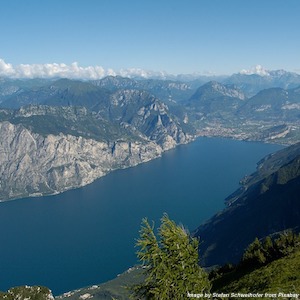Multidecadal analysis of Lake Garda water balance

Submitted: 16 May 2023
Accepted: 30 September 2023
Published: 20 November 2023
Accepted: 30 September 2023
Abstract Views: 1573
PDF: 703
Supplementary: 27
HTML: 22
Supplementary: 27
HTML: 22
Publisher's note
All claims expressed in this article are solely those of the authors and do not necessarily represent those of their affiliated organizations, or those of the publisher, the editors and the reviewers. Any product that may be evaluated in this article or claim that may be made by its manufacturer is not guaranteed or endorsed by the publisher.
All claims expressed in this article are solely those of the authors and do not necessarily represent those of their affiliated organizations, or those of the publisher, the editors and the reviewers. Any product that may be evaluated in this article or claim that may be made by its manufacturer is not guaranteed or endorsed by the publisher.
Similar Articles
- Iván A. Meza-Matty, Gorgonio Ruiz-Campos, Luis Walter Daesslé, Arturo Ruiz-Luna, Álvaro Alberto López-Lambraño, Faustino Camarena-Rosales, Kathleen R. Matthews, Daily, seasonal, and annual variability of temperature in streams inhabited by the endemic San Pedro Martir trout (Oncorhynchus mykiss nelsoni), in Baja California, Mexico, and the predicted temperature for the years 2025 and 2050 , Journal of Limnology: Vol. 80 No. 2 (2021)
- Livia Lucentini, Lilia Gigliarelli, Maria Elena Puletti, Antonella Palomba, Aurora Caldelli, Diego Fontaneto, Fausto Panara, Spatially explicit genetic structure in the freshwater sponge Ephydatia fluviatilis (Linnaeus, 1759) within the framework of the monopolisation hypothesis , Journal of Limnology: Vol. 72 No. 1 (2013)
- Rodrigo L. Arrieira, Geziele M. Alves, Leilane T. F. Schwind, Fabio A. Lansac-Tôha, Local factors affecting the testate amoeba community (Protozoa: Arcellinida; Euglyphida) in a neotropical floodplain , Journal of Limnology: Vol. 74 No. 3 (2015)
- Eva Pažourková, Josef Křeček, Peter Bitušík, Pavel Chvojka, Lenka Kamasová, Takaaki Senoo, Jan Špaček, Evžen Stuchlík, Impacts of an extreme flood on the ecosystem of a headwater stream , Journal of Limnology: Vol. 80 No. 2 (2021)
- Rossano Bolpagni, Eugenia Bettoni, Francesco Bonomi, Mariano Bresciani, Ketty Caraffini, Silvia Costaraoss, Federica Giacomazzi, Catia Monauni, Paola Montanari, Maria Cristina Mosconi, Alessandro Oggioni, Giovanna Pellegrini, Chiara Zampieri, Charophytes of the lake Garda (Northern Italy): a preliminary assessment of diversity and distribution , Journal of Limnology: Vol. 72 No. 2 (2013)
- Soumi Nandi, Gautam Aditya, Goutam K. Saha, Nutrient conditions and chironomid productivity in Kolkata, India: assessment for biomonitoring and ecological management , Journal of Limnology: Vol. 71 No. 2 (2012)
- Carmen Gabaldón, Miloslav Devetter, Josef Hejzlar, Karel Šimek, Petr Znachor, Jiří Nedoma, Jaromir Seda, Repeated flood disturbance enhances rotifer dominance and diversity in a zooplankton community of a small dammed mountain pond , Journal of Limnology: Vol. 76 No. 2 (2017)
- Adrianna Wojtal-Frankiewicz, Joanna Bernasińska, Tomasz Jurczak, Krzysztof Gwoździński, Piotr Frankiewicz, Marzena Wielanek, Microcystin assimilation and detoxification by Daphnia spp. in two ecosystems of different cyanotoxin concentrations , Journal of Limnology: Vol. 72 No. 1 (2013)
- Mariano Bresciani, Rossano Bolpagni, Federica Braga, Alessandro Oggioni, Claudia Giardino, Retrospective assessment of macrophytic communities in southern Lake Garda (Italy) from in situ and MIVIS (Multispectral Infrared and Visible Imaging Spectrometer) data , Journal of Limnology: Vol. 71 No. 1 (2012)
- Daniele Paganelli, Renato Sconfietti, Biodiversity loss in a small riverine wetland of the Ticino river (Lombardia, Northern Italy) , Journal of Limnology: Vol. 72 No. 3 (2013)
<< < 12 13 14 15 16 17 18 19 20 21 > >>
You may also start an advanced similarity search for this article.

 https://doi.org/10.4081/jlimnol.2023.2144
https://doi.org/10.4081/jlimnol.2023.2144





